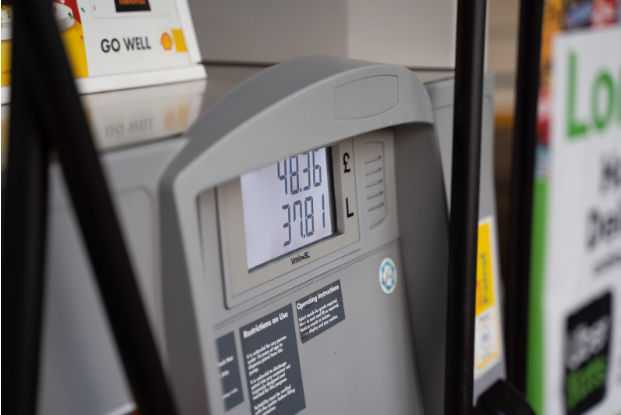Inflation has rocked the world in recent years. The pandemic, global conflict, and dramatic changes in consumer spending caused inflation to spike to 11.1% worldwide before retreating.
High inflation rates are, of course, bad for consumers. However, unpredictable inflationary pressures can also have a devastating effect on businesses. Entire industries suffered significant setbacks due to the supply-side issues that drove up costs and squeezed firms’ profit margins.

Supply Chain and Inflation
Understanding the link between the global supply chain and inflation is easy: when supply chains are distributed, supplier’s costs increase. As long as demand remains constant or grows, these costs are eventually passed on to the consumers, resulting in a rise in the price of goods or services known as inflation. However, supply chains affect each industry differently; some perform worse than others during periods of high inflation.
Inflation and supply chains share a symbiotic relationship, too. Nnamdi Ahuchogu, a specialist risk engineer for the Zurich Bank explains that “procurement becomes more complex during inflationary periods,” as consumers may change their spending when faced with rising costs. At the same time, supply chains become less efficient during periods of high inflation, as labor costs rise, ports become more congested, and fuel becomes more expensive. This reduces supply further and could push inflation even higher.
Unfortunately, we are living through relatively turbulent times. This means that we’re facing evolving supply chain concerns, including:
- War in Ukraine;
- The fallout from COVID-19 policies;
- Disruption in the Panama Canal and Suez Canal;
- Labor shortages and strikes at coastal ports.
It is hard to predict, exactly, how these pressures will continue to affect supply chains and inflation. So far, large economies like the US have stayed on top of inflation and recently recorded an inflation rate of 3.35%. While this is above the FEDs 2% target, it still represents a significant reduction from last year’s rate of around 6.5%.
That said, some industries are still feeling the squeeze and struggling to adapt to supply chain disruptions.
Housing
Homeownership is a major life goal for most people. However, many younger folks fear that they will have to delay entering the property market due to an increased gap between earnings and house prices. This is underlined by the fact that, in the past 40 years, inflation has risen by 892%, while house prices have risen by more than 2,350%.
Supply chain issues make it harder for first-time buyers to enter the market, too. Issues with building materials, labor, and supply chain management have delayed building projects and innately raised the costs associated with building new houses.
In an effort to cool inflation, the Federal Reserve has raised interest rates. This should reduce inflation by minimizing demand. Unfortunately, demand has far outstripped supply in the US for well over a decade. As such, folks are still applying for mortgages and buying houses that have risen in price due to inflationary pressures.
This can be frustrating for folks who have planned their economic path properly with frugal spending and savings. Fortunately, prospective homeowners can still enter the market by following tips for first-time buyers. These simple tips, like looking for hidden costs and setting a clear budget, can help folks find a property at the right price point and buck the trend of overpaying for housing.
Construction
The construction sector is one of the world’s biggest industries. According to a McKinsey report titled “Reinventing Construction”, construction accounts for 13% of the world’s GDP as around $10 trillion is spent on building projects every year.
However, unreliable supply chains disrupted the post-pandemic construction industry and left many projects in the lurch. The same McKinsey report identified that serious improvements to supply chain management and procurement are necessary to boost sector productivity, minimize costs, and bring down inflation.
Some constructors are already starting to improve their procurement strategies and alleviate supply chain concerns by searching for alternatives to concrete. That is because concrete prices, which are affected by energy rates, have increased by 15%, according to Concrete Financial Insights. By exploring alternatives to concrete, like ashcete, green concrete, and mass timber, construction firms can more accurately predict their costs and increase their odds of fulfilling difficult deadlines. Many of these alternatives are also significantly more eco-friendly.
Automobiles
Some assets, like gold and raw materials like soybeans, perform well during periods of inflation. They are seen as stable assets or are essential for the smooth running of several industries. Others, however, struggle to keep up with inflation due to the pressure it places on consumers.
Automobiles are particularly vulnerable to inflationary pressures. Higher production costs have pushed new-car prices up by 4.2% and driven up demand for used cars. This, combined with rising fuel costs and interest rates, has put a strain on consumers who are looking to buy or maintain their cars.
Fortunately, Ryan Brinkman, a lead analyst at JP Morgans, believes the automotive industry is set for a “more rapid improvement in the volume environment,” and “rapid normalization in pricing.” This is, however, dependent on stable economic growth which will eventually reduce interest rates and cool inflation.
Conclusion
The global supply chain shares a symbiotic relationship with inflation. This puts a real strain on commodity-driven industries like automobile manufacturing and construction. Housing supply chain issues continue to confound central banks and force decision-makers to raise interest rates, too. The future remains murky, too, as global conflict continues to put pressure on otherwise resilient supply chains.
Image courtesy of Unsplash.


Leave a Reply